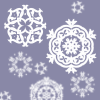Post by Dark One on Jun 14, 2005 20:58:44 GMT 11
As Crazedturkey seemed to get confused between gnomes and goblins in the 'Choose your own miscelaneous' thread, i thought i'd post this:
Gnomes
Kin to dwarves, gnomes are noticeably smaller than their distant cousins. Gnomes, as they proudly maintain, are also less rotund then dwarves. Their noses, however, are significantly larger. Most gnomes have dark tan or brown skin and white hair. A typical gnome lives for 600 years.
Gnomes have lively and sly senses of humor, especially for practical jokes. They have a great love of living things and finely wrought items, particularly gems and jewelry. Gnomes love all sorts of precious stones and are masters of gem polishing and cutting.
Gnomes prefer to live in areas of rolling, rocky hills, well wooded and uninhabited by humans. Their diminutive stature has made them suspicious of the larger races--humans and elves-- although they are not hostile. They are sly and furtitive with those they do not know or trust, and somewhat reserved even under the best of circumstances. Dwelling in mines and burrows, they are sympathetic to dwarves, but find their cousins' aversion to surface dwellers foolish.
Goblins
The word goblin is derived from the Greek "kobalos" meaning rogue. Appropriately, goblins are known as the thieves and villians of the fae realm. The term goblin can apply either to the ugliest members of the fae, or to certain sub-races.
Some reside in mines where they search for the earth's treasures (though not all goblins are adept at this pratice, Kobolds and Wichtlein mime the act by stricking pickaxes and hammers against the stones). Human miners take the resulting sounds as a sign of good luck, believing the present ore to be of high value. Other goblins choose human residences where their mischief includes the banging of pots and pans, rearranging furnitrue, removing the clothes from sleeping humans and knocking on doors and walls. Still others of the family prefer grottos, often residing in the same one for their entire life.
Those fae numbered among the goblin subraces, include: Scottish Trows, Scandinavian Trolls, English Spriggans, Welsh Knockers, Cornish Knockers, German Kobolds, the Irish Phooka and even Shakespeare's infamous Puck are all considered goblins.
Gnomes
Kin to dwarves, gnomes are noticeably smaller than their distant cousins. Gnomes, as they proudly maintain, are also less rotund then dwarves. Their noses, however, are significantly larger. Most gnomes have dark tan or brown skin and white hair. A typical gnome lives for 600 years.
Gnomes have lively and sly senses of humor, especially for practical jokes. They have a great love of living things and finely wrought items, particularly gems and jewelry. Gnomes love all sorts of precious stones and are masters of gem polishing and cutting.
Gnomes prefer to live in areas of rolling, rocky hills, well wooded and uninhabited by humans. Their diminutive stature has made them suspicious of the larger races--humans and elves-- although they are not hostile. They are sly and furtitive with those they do not know or trust, and somewhat reserved even under the best of circumstances. Dwelling in mines and burrows, they are sympathetic to dwarves, but find their cousins' aversion to surface dwellers foolish.
Goblins
The word goblin is derived from the Greek "kobalos" meaning rogue. Appropriately, goblins are known as the thieves and villians of the fae realm. The term goblin can apply either to the ugliest members of the fae, or to certain sub-races.
Some reside in mines where they search for the earth's treasures (though not all goblins are adept at this pratice, Kobolds and Wichtlein mime the act by stricking pickaxes and hammers against the stones). Human miners take the resulting sounds as a sign of good luck, believing the present ore to be of high value. Other goblins choose human residences where their mischief includes the banging of pots and pans, rearranging furnitrue, removing the clothes from sleeping humans and knocking on doors and walls. Still others of the family prefer grottos, often residing in the same one for their entire life.
Those fae numbered among the goblin subraces, include: Scottish Trows, Scandinavian Trolls, English Spriggans, Welsh Knockers, Cornish Knockers, German Kobolds, the Irish Phooka and even Shakespeare's infamous Puck are all considered goblins.









 *runs and hides*
*runs and hides*




